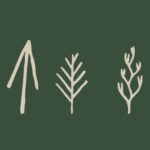Beavers released in Glen Affric 400 years after extinction in Scotland
Beavers released in Glen Affric 400 years after extinction in Scotland
A family of five beavers and a beaver pair have been released at two sites on Loch Beinn a Mheadhoin in the Glen Affric National Nature Reserve in the northwest Highlands.
The beavers were relocated under licence from agricultural land in Tayside to an area where their natural behaviours are expected to positively benefit the landscape and biodiversity.
Forestry and Land Scotland (FLS), which manages the 17,604-hectare NNR, has been working in partnership with Trees for Life on the initiative since 2022, supported by Beaver Trust. The project has included three phases of extensive consultations with local communities and land managers.
FLS North Region Manager, Alex Mcleod, said: “Beavers being translocated to Glen Affric is the culmination of a long, exacting and thorough process for FLS and Trees for Life. Fully engaging with the local Affric communities, including through a detailed consultation process, has been crucial in making sure that all voices were heard.
“This high degree of local consultation has helped put in place processes to discuss any necessary mitigation, and to address concerns raised by those not in favour of beaver introductions. We are establishing a group to oversee ongoing monitoring to inform management decisions in the months and years to come, and I would hope that the beavers eventually become an integral and unremarked part of Glen Affric.”
Steve Micklewright, Trees for Life’s Chief Executive, said: “As we saw the beavers released into the loch, we were watching a moment of wildlife history – offering hope for tackling the nature and climate emergencies, and a better future for biodiversity and people.
“We’re proud to have worked with FLS on this community-focused initiative. FLS has undertaken vital habitat restoration work in Glen Affric over many years and shown real leadership in nature restoration by reintroducing this important habitat-creating, biodiversity-boosting, flood-preventing animal.”
NatureScot granted a licence in August for the release of four family groups of beavers to the waters above Beinn a Mheadhoin dam, following an application by FLS last December. The first two releases, of the beaver pair followed by the family of five, took place on 24 October.
Beavers create wetlands that benefit other wildlife, purify water and reduce flooding. The animals can bring economic benefits to communities through eco-tourism.
Sometimes the species can also create localised problems. The Glen Affric project partners have put in place measures to address these quickly should they emerge.
FLS is establishing a Beaver Community Mitigation and Monitoring Group as a community and visitor liaison focal point, where developments can be monitored, aired and addressed. The Group, which also involves NatureScot, will also look at developing educational opportunities with local schools, the wider community and visitors to the area.
Trees for Life’s dedicated Beaver Management Officer, Tobias Leask, will be engaging with the whole community, offering practical support to ensure local people can enjoy and benefit from the return of the beavers through a well-managed process.
The translocation to Glen Affric was carried out by Dr Roisin Campbell-Palmer, Head of Restoration at Beaver Trust, who said: “Beavers are a powerful ally in turning the biodiversity crisis around, and we’re delighted to have carried out this important reintroduction to one of Scotland’s most famous glens.
“Each new catchment we restore beavers to brings Scotland closer to its 2045 goal of a nature-rich, resilient future. Responsible, well-considered translocations like this are helping re-establish a healthy, connected beaver population across the country.”
Prior to their release in Glen Affric, the beavers were housed at a specialised beaver holding and quarantine facility at Five Sisters Zoo for health checks.
Local resident Malcolm Wield said: “Beavers benefit a wide range of different species including trees, plants, invertebrates, amphibians, fish, other mammals, and birds. This is a good result for us, our children, our grandchildren, and future generations. Congratulations to all involved.”
The reintroduction helps to deliver Scotland’s national beaver strategy, and a Scottish Government directive calling on public agencies to seek reintroductions of the species on state-owned land out of existing beaver range.
Once widespread in Scotland, the Eurasian beaver was hunted to extinction for its pelt, meat and musk oil. Records indicate beavers may have survived in small numbers until the 16th century. Beavers are a protected native species, first reintroduced to Scotland in 2009.

